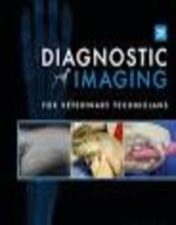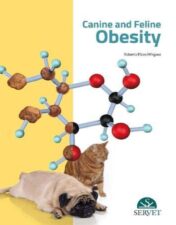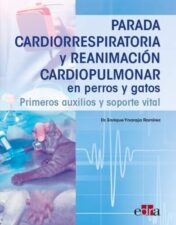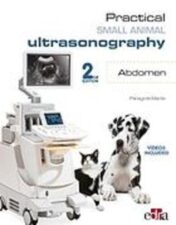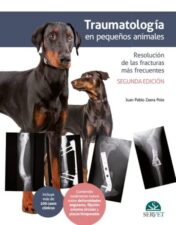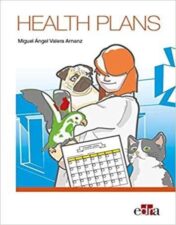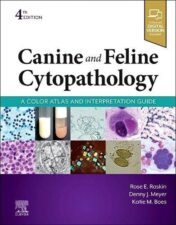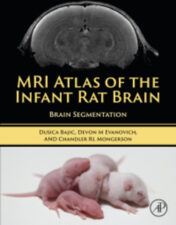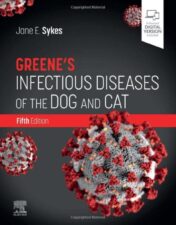Discover the Best Veterinary Books at DentalBooks.net
Are you looking for the best veterinary books to help you learn more about animal health and care? Look no further than DentalBooks.net. Our selection of veterinary books covers a wide range of topics, from basic pet care to advanced medical procedures. Whether you’re a veterinarian, vet tech, or just an animal lover, you’ll find something to help you better understand and care for your furry friends. With our extensive collection of veterinary books, you can stay up-to-date on the latest treatments and techniques, as well as gain valuable insight into the anatomy and physiology of animals. Plus, our books are written by experts in the field, so you can trust that the information is accurate and reliable. So don’t wait any longer – explore our selection of veterinary books today and start learning more about animal health and care!
Veterinary Books
Diagnostic Imaging for Veterinary Technicians, 2nd Edition 2022 High Quality Image PDF
Veterinary Books
House Soiling Problems in Domestic Cats (Domestic Cat Behaviour Problems) 2022 epub+converted pdf
Veterinary Books
House Soiling Problems in Domestic Cats (Domestic Cat Behaviour Problems) 2022 Original PDF
Veterinary Books
Doppler Echocardiography for the Small Animal Practitioner (Rapid Reference) 2022 Original PDF
Veterinary Books
Doppler Echocardiography for the Small Animal Practitioner (Rapid Reference) 2022 epub+converted pdf
Veterinary Books
Stress, Compassion Fatigue and Burnout Handling in Veterinary Practice 2020 epub+converted pdf
Veterinary Books
Casos clínicos en Medicina Cardiotorácica 2021 epub+converted pdf
Veterinary Books
Bacterial Skin Infections in Small Animals 2019 epub+converted pdf
Veterinary Books
Veterinary Books
Practical Small Animals Ultrasonography. Abdomen_2nd Edition 2022 epub+converted pdf
Veterinary Books
Veterinary practice management. 2nd Edition 2022 epub+converted pdf
Veterinary Books
Veterinary Books
Veterinary Books
Veterinary Books
Los secretos de la recepción veterinaria 2022 epub+converted pdf
Veterinary Books
Canine and Feline Cytopathology, 4th edition 2022 Original PDF
Veterinary Books
Small Animal Critical Care Medicine, 3rd edition 2022 Original PDF
Veterinary Books
Cunningham. Fisiología veterinaria (6ª ed.) 2020 Original PDF
Veterinary Books
Essential Calculations for Veterinary Nurses and Technicians, 4th Edition 2022 Original PDF
Introduction
Veterinary books are an invaluable resource for veterinarians, veterinary students, and pet owners alike. They provide detailed information on a wide range of topics related to animal health, including anatomy, physiology, nutrition, diseases, treatments, and more. Veterinary books can help you better understand your pet's needs and provide guidance on how to care for them properly. With the right book, you can become an expert in animal health and ensure that your pet receives the best possible care.
Overview of Veterinary Anatomy and Physiology
Veterinary anatomy and physiology is the study of the structure and function of animals, including their organs, tissues, and cells. It is a branch of veterinary medicine that focuses on the physical form and physiological processes of animals. Veterinary anatomy and physiology are essential components of veterinary medicine, as they provide the foundation for understanding how animals work and how to diagnose and treat diseases.
Veterinary anatomy is the study of the structure of animals, including their bones, muscles, organs, and other body parts. It involves the identification and description of the various parts of an animal’s body and how they fit together. Veterinary anatomists use a variety of tools, such as X-rays, CT scans, and ultrasound, to examine the internal structures of animals. They also use dissection to study the external features of animals.
Veterinary physiology is the study of the functions of animals, including their metabolism, digestion, circulation, respiration, reproduction, and behavior. It involves the study of how the body works and how it responds to different stimuli. Veterinary physiologists use a variety of techniques, such as blood tests, urine tests, and endoscopy, to examine the functioning of an animal’s organs and systems.
Veterinary anatomy and physiology are closely related fields. Anatomy provides the foundation for understanding the structure of animals, while physiology provides the foundation for understanding how animals work. Together, these two disciplines provide veterinarians with the knowledge and skills necessary to diagnose and treat diseases in animals.
Common Diseases and Treatments in Veterinary Medicine
Veterinary medicine is a field of medical science that focuses on the diagnosis, treatment, and prevention of diseases in animals. Common diseases and treatments in veterinary medicine vary depending on the species of animal being treated.
In dogs, some of the most common diseases include canine distemper, parvovirus, rabies, heartworm, and kennel cough. Canine distemper is a highly contagious virus that affects the respiratory, gastrointestinal, and nervous systems of dogs. Treatment for this disease includes supportive care such as fluids, antibiotics, and anti-inflammatory medications. Parvovirus is another highly contagious virus that affects the gastrointestinal system of dogs. Treatment for this virus includes antibiotics, fluids, and anti-nausea medications. Rabies is a viral infection that affects the central nervous system of mammals, including dogs. Treatment for rabies involves a series of vaccinations to prevent the spread of the virus. Heartworm is a parasitic infection that affects the heart and lungs of dogs. Treatment for this condition includes medication to kill the parasites and supportive care such as fluids and antibiotics. Kennel cough is an infectious respiratory disease that affects dogs. Treatment for this condition includes antibiotics, cough suppressants, and supportive care.
In cats, some of the most common diseases include feline leukemia, feline immunodeficiency virus, upper respiratory infections, and flea infestations. Feline leukemia is a viral infection that affects the immune system of cats. Treatment for this condition includes supportive care such as fluids and antibiotics, as well as antiviral medications. Feline immunodeficiency virus is a viral infection that affects the immune system of cats. Treatment for this condition includes supportive care such as fluids and antibiotics, as well as antiviral medications. Upper respiratory infections are caused by viruses or bacteria and can affect the nose, throat, and lungs of cats. Treatment for this condition includes antibiotics, fluids, and supportive care. Flea infestations are caused by small insects that feed on the blood of cats. Treatment for this condition includes flea control products and medications to kill the fleas.
In horses, some of the most common diseases include equine influenza, strangles, colic, and laminitis. Equine influenza is a highly contagious virus that affects the respiratory system of horses. Treatment for this condition includes supportive care such as fluids and antibiotics, as well as antiviral medications. Strangles is a bacterial infection that affects the lymph nodes of horses. Treatment for this condition includes antibiotics, fluids, and supportive care. Colic is a condition that affects the digestive system of horses. Treatment for this condition includes pain relief medications, fluids, and supportive care. Laminitis is a condition that affects the feet of horses. Treatment for this condition includes pain relief medications, supportive care, and corrective shoeing.
No matter what type of animal is being treated, it is important to consult with a veterinarian to determine the best course of action for treating any disease. Veterinary medicine is a complex field and requires specialized knowledge and experience to properly diagnose and treat diseases in animals.
Animal Nutrition and Feeding
Veterinary Surgery and Anesthesia
Veterinary surgery and anesthesia are two important components of veterinary medicine. Veterinary surgery is the branch of veterinary medicine that deals with the diagnosis, treatment, and prevention of diseases and injuries in animals. It involves a variety of surgical procedures, including orthopedic surgery, soft tissue surgery, neurosurgery, ophthalmic surgery, and reconstructive surgery. Veterinary surgeons use a variety of techniques to diagnose and treat conditions in animals, including physical examination, radiography, ultrasound, endoscopy, and laboratory tests.
Anesthesia is an essential part of veterinary surgery. Anesthesia is used to reduce pain and discomfort during surgery and other medical procedures. It can also be used to induce unconsciousness so that the animal does not feel any pain or distress during the procedure. There are several types of anesthesia available for use in veterinary medicine, including general anesthesia, local anesthesia, and regional anesthesia. Each type of anesthesia has its own advantages and disadvantages, and the veterinarian will choose the best option for the patient based on their individual needs.
Veterinary surgeons and anesthesiologists work together to ensure the safety and comfort of the animal during surgery and other medical procedures. The veterinarian will assess the animal’s health and condition before administering anesthesia and will monitor the animal closely throughout the procedure. They will also provide post-operative care to ensure the animal recovers quickly and safely.
Veterinary surgery and anesthesia are important components of veterinary medicine and are necessary for the diagnosis, treatment, and prevention of diseases and injuries in animals. Veterinary surgeons and anesthesiologists work together to ensure the safety and comfort of the animal during surgery and other medical procedures.
Veterinary Diagnostic Imaging Techniques
Veterinary diagnostic imaging techniques are used to diagnose and treat a variety of medical conditions in animals. These techniques allow veterinarians to visualize the internal structures of an animal’s body, providing them with valuable information about the health of their patient.
The most common veterinary diagnostic imaging techniques include radiography (x-ray), computed tomography (CT scan), magnetic resonance imaging (MRI), ultrasound, and nuclear scintigraphy. Each of these techniques has its own advantages and disadvantages, and the choice of which technique to use depends on the type of condition being diagnosed.
Radiography is the oldest and most commonly used veterinary diagnostic imaging technique. It uses x-rays to create images of the internal structures of an animal’s body. Radiographs can be used to diagnose fractures, tumors, and other abnormalities.
Computed tomography (CT) scans use a series of x-ray images taken from different angles to create a three-dimensional image of the internal structures of an animal’s body. CT scans are particularly useful for diagnosing soft tissue injuries, such as torn ligaments or tendons.
Magnetic resonance imaging (MRI) uses a powerful magnetic field and radio waves to create detailed images of the internal structures of an animal’s body. MRI is especially useful for diagnosing neurological disorders, such as brain tumors or spinal cord injuries.
Ultrasound uses sound waves to create images of the internal structures of an animal’s body. Ultrasound is often used to diagnose pregnancy, bladder stones, and other abdominal conditions.
Nuclear scintigraphy uses radioactive tracers to create images of the internal structures of an animal’s body. Nuclear scintigraphy is often used to diagnose bone and joint diseases, such as arthritis.
Veterinary diagnostic imaging techniques are invaluable tools for diagnosing and treating a variety of medical conditions in animals. By using these techniques, veterinarians can gain valuable insight into the health of their patients, allowing them to provide the best possible care.
Conclusion
Veterinary books are an invaluable resource for veterinarians, veterinary students, and pet owners alike. They provide a wealth of information on animal health, nutrition, and behavior, as well as tips on how to care for animals properly. Veterinary books can help pet owners make informed decisions about their pet's health and wellbeing, while also providing veterinarians with the latest research and best practices in the field. With so many different types of veterinary books available, there is sure to be one that meets your needs. Whether you're looking for a comprehensive guide to animal care or a specific book on a particular species, veterinary books can provide the knowledge and expertise you need.

